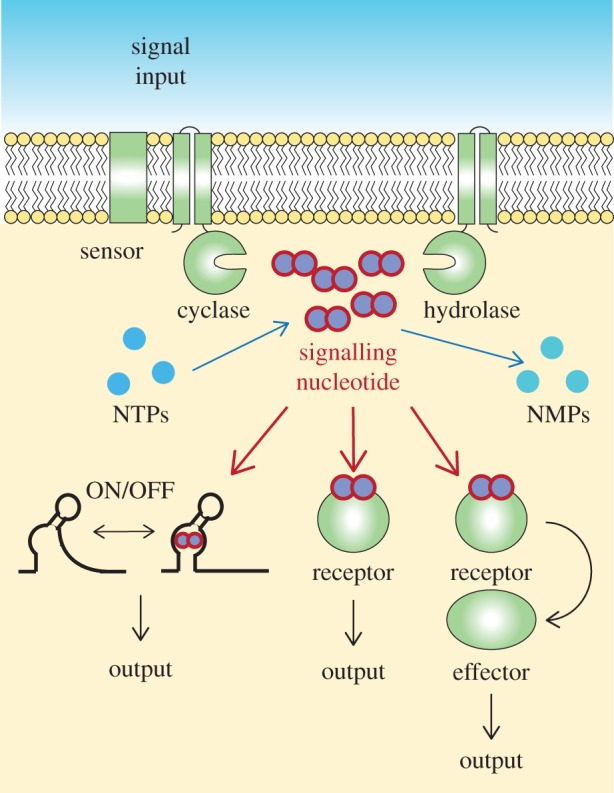Figure 1.

Schematic of nucleotide signalling pathway in bacteria. An input signal is sensed by a dedicated sensor protein or directly by the cyclase or hydrolase enzymes. This will result in their activating or inhibiting and as a consequence lead to a change in the intracellular signalling nucleotide concentration. At high signalling nucleotide levels, the molecule will bind (i) to nucleotide-specific riboswitches to affect the transcription or translation of downstream effector proteins or (ii) to specific receptor proteins and either directly alter their function or (iii) allow them to interact with specific downstream effector proteins. The final output of this will be the activation or repression of specific cellular pathways, which depending on the signalling nucleotide and to name a few examples can range from c-di-GMP controlling flagella, pili and expolysaccaride production, to the stringent response alarmones (p)ppGpp diverting resources away from active growth to amino acid synthesis in order to promote cell survival under starvation conditions.
